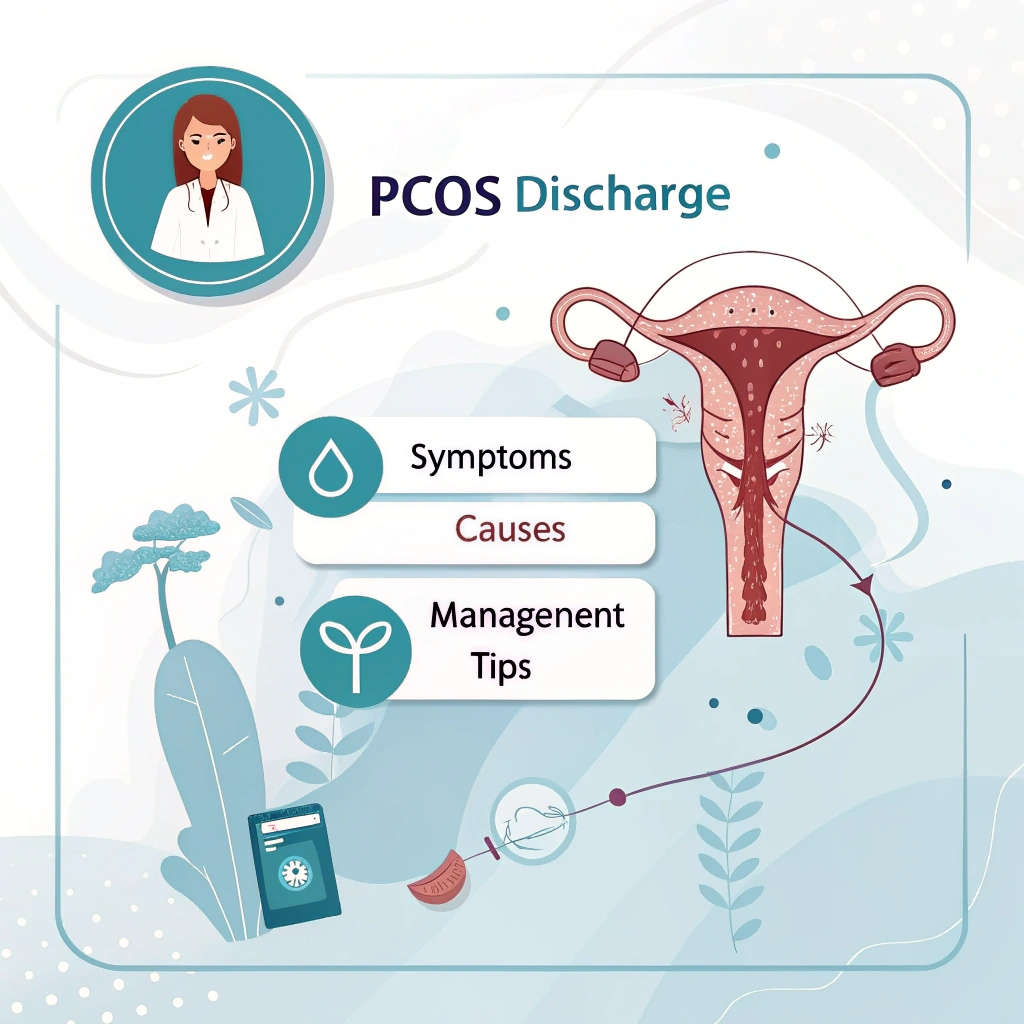Polycystic Ovary Syndrome (PCOS) is a common hormonal disorder affecting individuals of reproductive age, particularly those assigned female at birth. It is characterized by a range of symptoms, including irregular menstrual cycles, hormonal imbalances, and the presence of small cysts on the ovaries. One of the lesser-discussed but significant symptoms of PCOS is abnormal vaginal discharge. Understanding the nature of this discharge, its causes, and how to manage it is crucial for those living with PCOS.
What is Vaginal Discharge?
Vaginal discharge is a normal physiological occurrence that helps keep the vaginal area clean and free from infections. It is typically clear or white, with a consistency that can range from thin and watery to thick and sticky, depending on the menstrual cycle phase. However, changes in the color, odor, or consistency of discharge can indicate an underlying issue, such as an infection or hormonal imbalance.
PCOS and Vaginal Discharge
In individuals with PCOS, hormonal imbalances—particularly elevated levels of androgens (male hormones) and insulin resistance—can lead to changes in vaginal discharge. These hormonal fluctuations can affect the vaginal environment, potentially leading to abnormal discharge. Here are some key points to consider:
1. Hormonal Imbalances and Discharge
-
Estrogen and Progesterone: PCOS often disrupts the balance between estrogen and progesterone, two key hormones that regulate the menstrual cycle. This imbalance can lead to irregular periods and changes in cervical mucus, which may result in abnormal discharge.
-
Androgens: Elevated levels of androgens can cause the vaginal lining to become thinner and less lubricated, leading to dryness or, conversely, increased discharge as the body attempts to compensate.
2. Infections and Discharge
-
Yeast Infections: Women with PCOS are at a higher risk of developing yeast infections due to insulin resistance and elevated blood sugar levels. Yeast infections often cause thick, white, cottage cheese-like discharge accompanied by itching and irritation.
-
Bacterial Vaginosis (BV): Hormonal imbalances can also disrupt the natural pH balance of the vagina, making it more susceptible to bacterial overgrowth. BV typically causes a thin, grayish discharge with a fishy odor.
-
Sexually Transmitted Infections (STIs): While not directly caused by PCOS, hormonal imbalances and irregular menstrual cycles can sometimes mask the symptoms of STIs, which may present with unusual discharge.
3. Cervical Mucus Changes
-
PCOS can alter the production and consistency of cervical mucus. Some individuals may notice thicker, stickier discharge, while others may experience scant or watery discharge. These changes can make it difficult to track ovulation, further complicating fertility concerns.
Read More Blog:- Generic Viagra (Sildenafil) for Older Men: A Second Chance at Romance
Characteristics of Abnormal Discharge in PCOS
Abnormal discharge in individuals with PCOS may present in various ways, including:
-
Color: Discharge may appear yellow, green, or gray, indicating a possible infection.
-
Consistency: It may become unusually thick, clumpy, or watery.
-
Odor: A strong, unpleasant odor, particularly a fishy smell, can be a sign of bacterial vaginosis or another infection.
-
Volume: Some individuals may experience an increase in discharge volume, while others may notice a decrease, leading to vaginal dryness.
When to Seek Medical Attention
While some changes in discharge may be benign, certain symptoms warrant prompt medical attention:
-
Persistent itching, burning, or irritation in the vaginal area.
-
Discharge accompanied by a foul odor.
-
Discharge that is green, yellow, or gray in color.
-
Pain during urination or sexual intercourse.
-
Bleeding or spotting between periods.
These symptoms could indicate an infection or another underlying condition that requires treatment.
Managing Abnormal Discharge in PCOS
Managing abnormal discharge in PCOS involves addressing both the hormonal imbalances and any secondary infections. Here are some strategies:
1. Medical Treatments
-
Hormonal Therapy: Birth control pills or other hormonal treatments can help regulate estrogen and progesterone levels, potentially normalizing discharge.
-
Antifungal Medications: For yeast infections, over-the-counter or prescription antifungal creams, ointments, or oral medications may be necessary.
-
Antibiotics: Bacterial infections like BV require antibiotics to restore the vaginal flora balance.
-
Metformin: This medication, commonly used to manage insulin resistance in PCOS, may also help regulate menstrual cycles and reduce abnormal discharge.
2. Lifestyle Changes
-
Diet: A balanced diet low in refined sugars and high in fiber can help manage insulin resistance and reduce the risk of yeast infections.
-
Hygiene: Practice good vaginal hygiene by avoiding douches and scented products, which can disrupt the natural pH balance.
-
Probiotics: Incorporating probiotics into your diet or taking supplements can promote healthy vaginal flora and prevent infections.
3. Natural Remedies
-
Tea Tree Oil: Known for its antifungal properties, diluted tea tree oil can be used to treat yeast infections. However, it should be used with caution and never applied directly to the skin.
-
Apple Cider Vinegar: Adding apple cider vinegar to a warm bath may help restore vaginal pH balance.
-
Yogurt: Applying plain, unsweetened yogurt to the vaginal area can introduce beneficial bacteria and alleviate symptoms of yeast infections.
Preventing Abnormal Discharge in PCOS
Prevention is key to managing abnormal discharge in PCOS. Here are some tips:
-
Regular Monitoring: Keep track of your menstrual cycle and any changes in discharge to identify patterns or abnormalities.
-
Healthy Lifestyle: Maintain a healthy weight, exercise regularly, and manage stress to help regulate hormones.
-
Avoid Irritants: Steer clear of scented tampons, pads, and vaginal sprays, which can disrupt the vaginal environment.
-
Stay Hydrated: Drinking plenty of water can help maintain overall vaginal health.
Conclusion
Abnormal vaginal discharge is a common but often overlooked symptom of PCOS. It can result from hormonal imbalances, infections, or changes in cervical mucus. Understanding the causes and characteristics of this discharge is essential for effective management. By seeking medical advice, making lifestyle changes, and using appropriate treatments, individuals with PCOS can manage this symptom and improve their overall quality of life. If you experience persistent or concerning changes in discharge, consult a healthcare provider for a thorough evaluation and personalized treatment plan.

